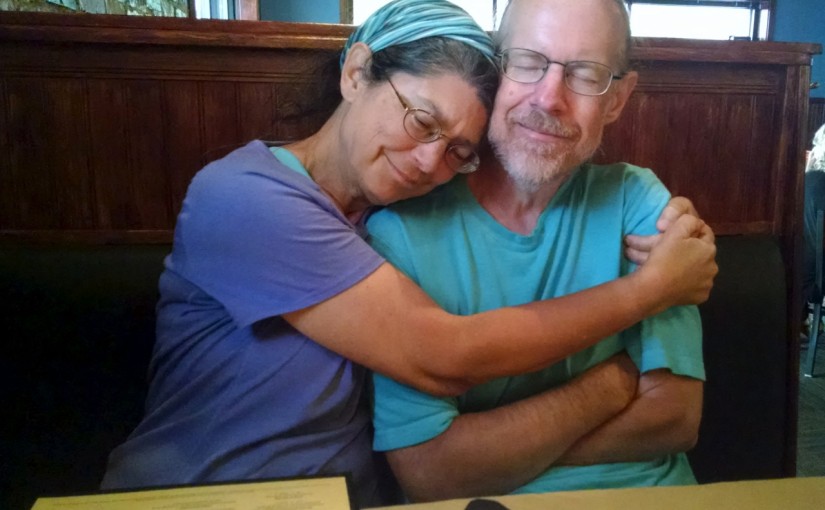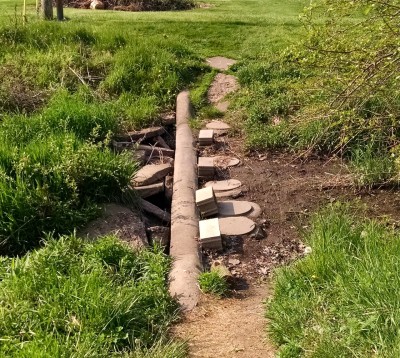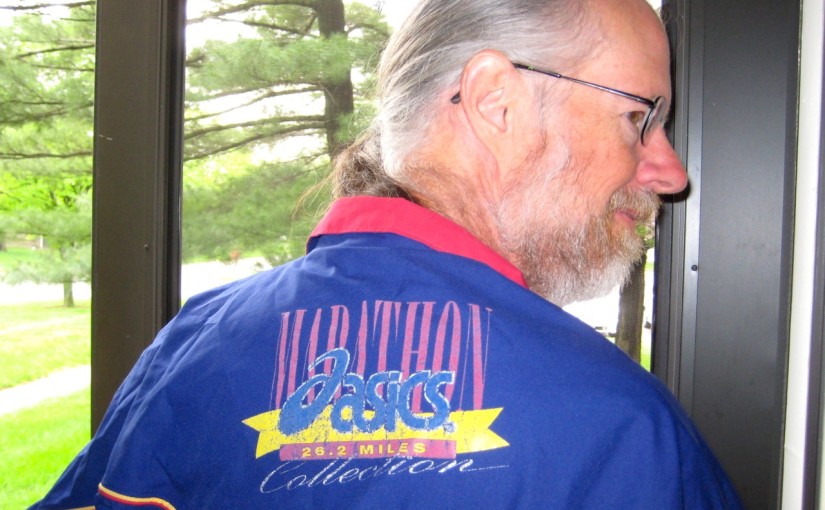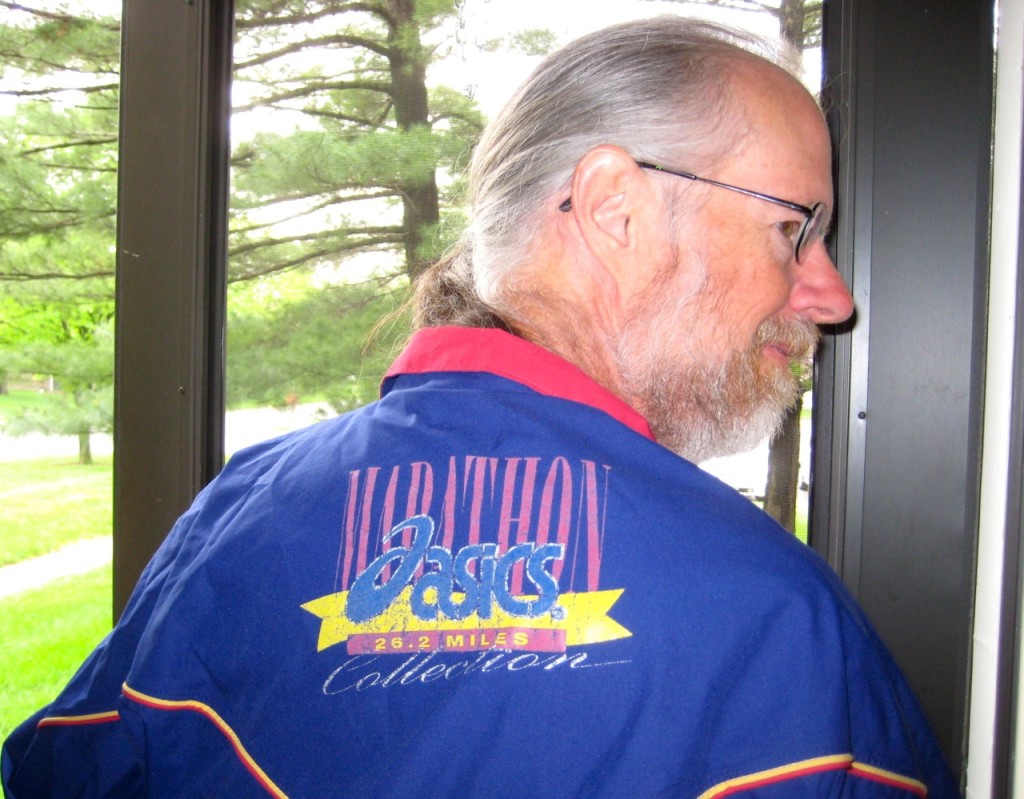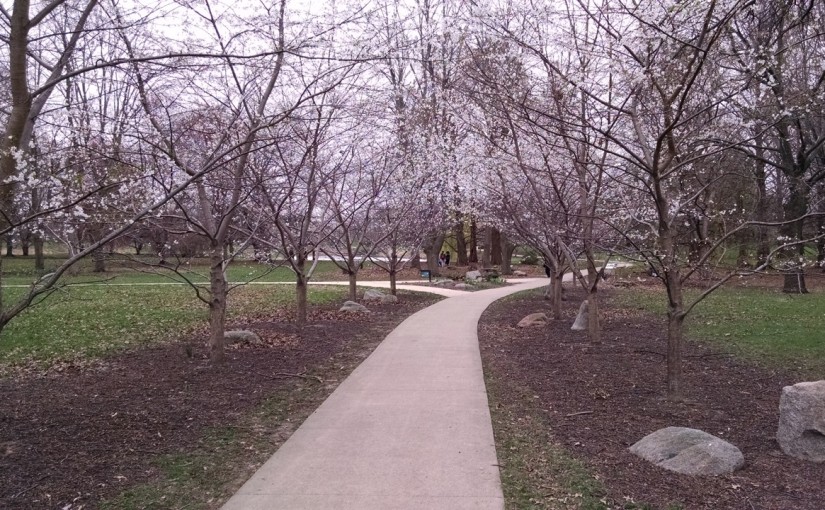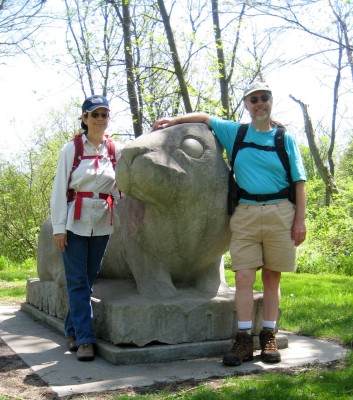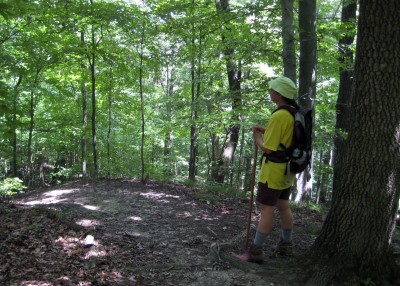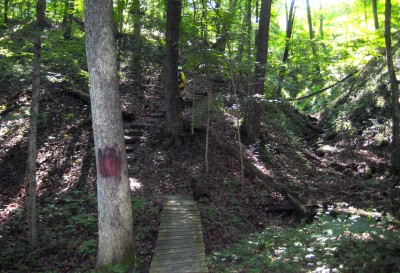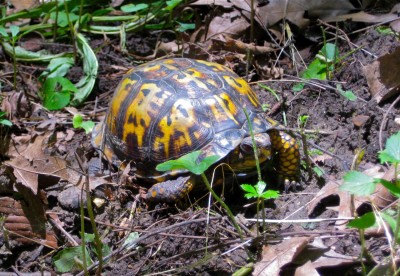Two years we trained for this particular very long walk, without getting it together to make the trip to Kalamazoo during the few summer weeks when the days are long enough to through-hike the Kal-Haven Trail in a day. This year we made it happen.
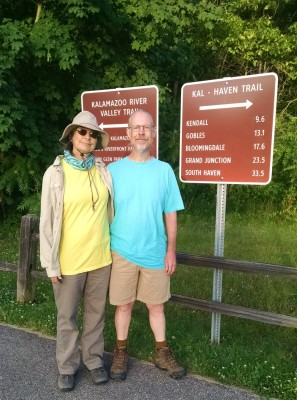 We meant to be at the trailhead by dawn which was 6:05 AM, but breakfast and final checking of gear took a little longer than we’d hoped. It was almost one hour later when we posed for pictures in front of the sign. We were walking just a few minutes later. Jackie started Endomondo at 7:06.
We meant to be at the trailhead by dawn which was 6:05 AM, but breakfast and final checking of gear took a little longer than we’d hoped. It was almost one hour later when we posed for pictures in front of the sign. We were walking just a few minutes later. Jackie started Endomondo at 7:06.
My brother, Steven Brewer, had offered to drive support, and did a great job. He drove us to the trailhead, met us at four or five points along the way to provide fresh, cold bottles of water, laid out a sumptuous, bounteous feast for lunch, and took pictures along the way. (He has written his own account of the walk.)
We made excellent time through the morning, clocking out a whole series of sub-18-minute miles, and reached Gobles a few minutes before noon.
The crushed limestone surface was great—smooth, level, hard enough for efficient walking, gentler than concrete. (There was one stretch in Bloomingdale that had been resurfaced with asphalt, which was much harder on the feet.)
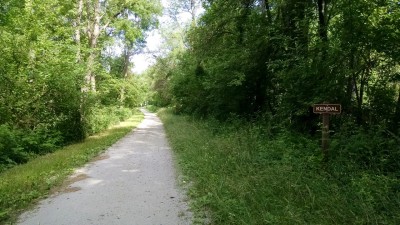 There was one downside to the surface, though. Almost as it it were designed that way, my tread caught the limestone and pitched it forwards into my boots. I had to stop every few miles and shake a teaspoon of limestone grit out of my boots.
There was one downside to the surface, though. Almost as it it were designed that way, my tread caught the limestone and pitched it forwards into my boots. I had to stop every few miles and shake a teaspoon of limestone grit out of my boots.
Still great for walking on, and kinda pretty.
I had made sandwiches, and Steven had gotten all sorts of stuff to go with them—german potato salad, red bananas, hummus, flat bread, raspberries, raw veggies, and brownies for desert.
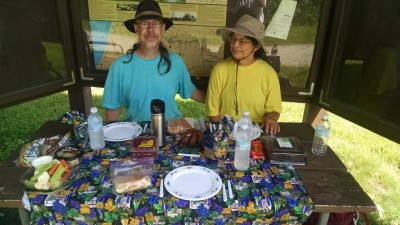 Behold our awesome lunch, served trailside, complete with cloth napkins.
Behold our awesome lunch, served trailside, complete with cloth napkins.
It took some minutes to loosen up after we got started going again, but we were almost matching our pace, carrying on with sub-20-minute miles right along until we hit mile 25.
I was still feeling pretty good then. We had slowed down a bit, but as we passed mile 27, I tweeted, “Has blown through marathon distance and is pressing for 33.5 miles. South Haven here we come!”
Pretty much just about then, though, I started dragging a bit. We had walked farther than we’ve ever walked before, and the last few miles were tough.
We pressed on, walking at perhaps a 22-minute pace. Jackie held up better than I did, as you can perhaps tell from this picture, taken very close to the end of the trail. Steven had suggested that we smile, and both Jackie and I did our best:
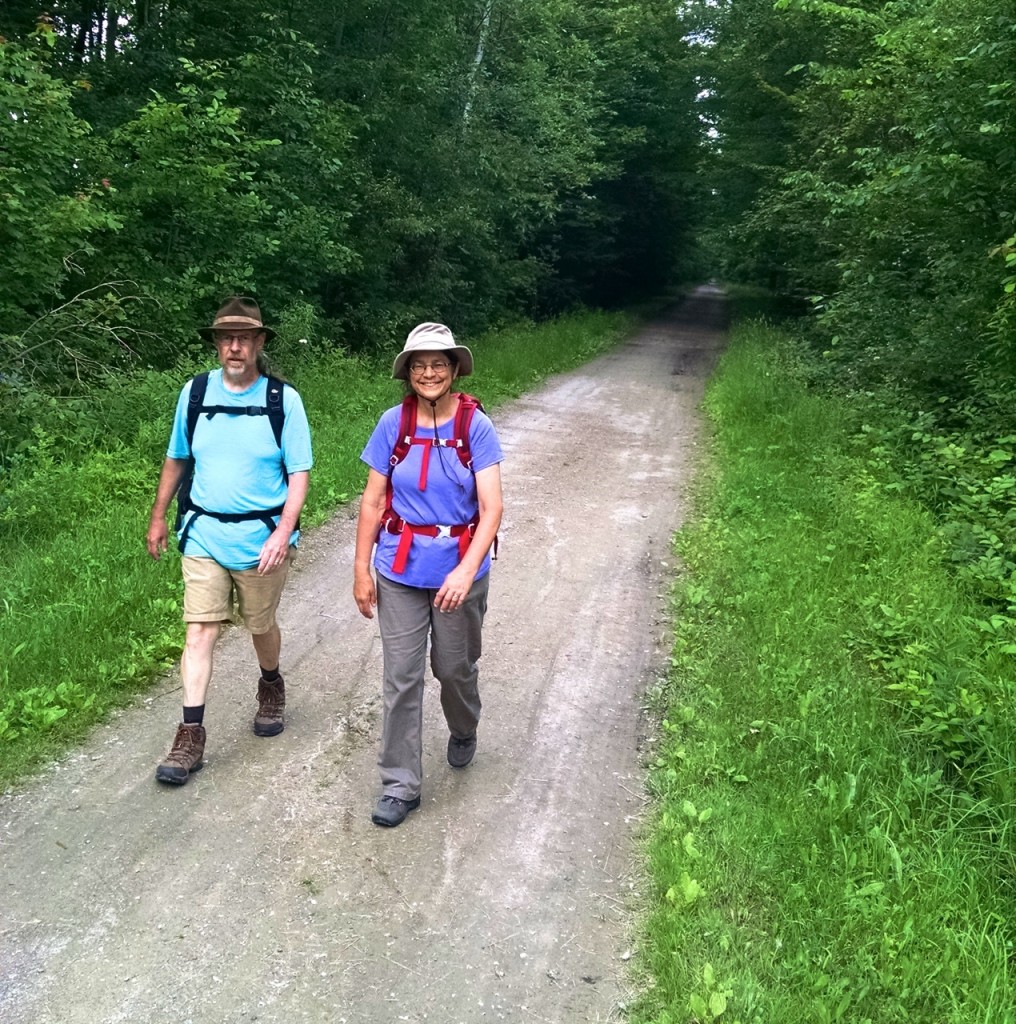 At that point it was merely a matter of trudging on. We wrapped up at 33.41 miles as measured by Endomondo, and Steven popped us into the car and drove us to the restaurant for a celebratory feast.
At that point it was merely a matter of trudging on. We wrapped up at 33.41 miles as measured by Endomondo, and Steven popped us into the car and drove us to the restaurant for a celebratory feast.
At about that point, my body seemed to have lost the ability to thermoregulate—I was shivering so hard my teeth were chattering in the slightly cool air of the South Haven evening.
Jackie wrapped her arms around me to keep me warm, and Steven got this picture as well:
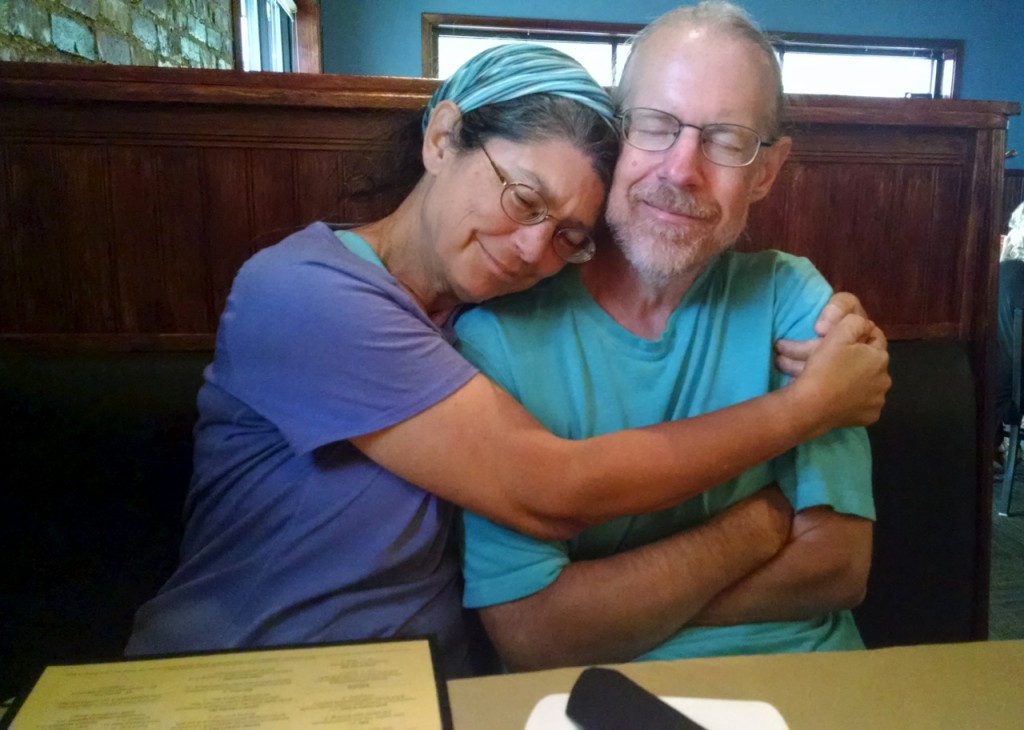 After a good night’s sleep, a big breakfast, and a nap after lunch, I think we’re all largely recovered. I stiffen up a bit if I sit still, but am not really even very sore. In the morning we got out to play Ingress, and I was able to walk around pretty much as usual. I’ll take at least one more day off before I go for a run, but basically I feel fine.
After a good night’s sleep, a big breakfast, and a nap after lunch, I think we’re all largely recovered. I stiffen up a bit if I sit still, but am not really even very sore. In the morning we got out to play Ingress, and I was able to walk around pretty much as usual. I’ll take at least one more day off before I go for a run, but basically I feel fine.
We have no plans for even longer walks, but we’ll certainly keep walking, perhaps expanding to multi-day through-hikes of the sort where your gear is schlepped for you from B&B to B&B.
It was a great experience!

